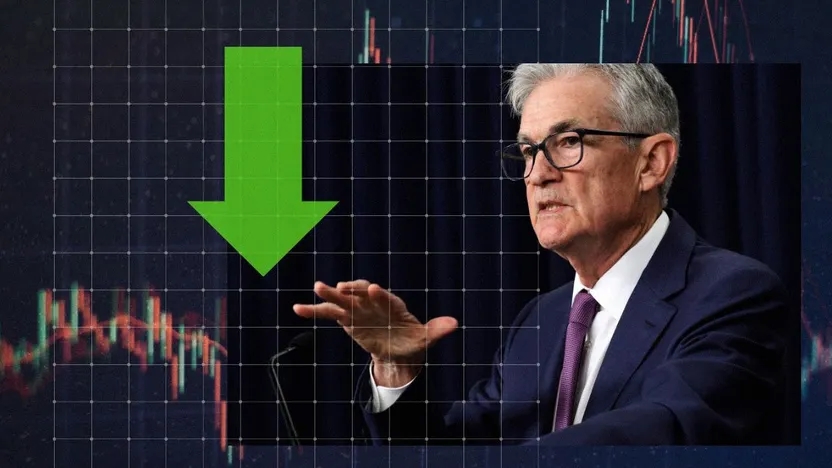
The Federal Reserve has issued its first interest rate cut in four years, kicking off an easing cycle that is already making new mortgages more affordable.
Fed policymakers announced the half-point rate cut on Wednesday, bringing the central bank’s effective benchmark rate to about 4.8%, down from a two-decade high of about 5.3%. It marked the first rate cut since March 2020, and follows two years of elevated interest rates in the central bank’s fight against inflation.
The half-point rate slash is larger than the quarter-point cut that markets predicted as little as a week ago. It signals that the Fed believes inflation has essentially been vanquished and is now focused on preventing a recession and major job losses.
The move, along with further rate cuts expected this year and next, will lower borrowing costs for consumers and businesses. Mortgage rates, which have already dropped roughly a percentage point since May, could keep trending down if the Fed continues to signal further rate cuts.
Mortgage Rates and Federal Funds Rate Since 1990
Mortgage rates aren’t tied directly to the Fed’s benchmark rate, but move in response bond market investor expectations about long-term trends.
Officially, the Fed sets its target rate as a range to allow flexibility. The current target range of 5.25% to 5.5% will drop to a range of 4.75% to 5% with the latest policy decision.
Mortgage rates aren’t directly tied to the federal funds rate, but follow long-term trends in the bond market based on investor expectations about future Fed rate moves.
The average rate on 30-year fixed mortgages was 6.2% for the week ending Sept. 12, according to Freddie Mac. That’s down from 7.2% in May and 7.9% in October, which marked a 23-year high.
“These lower rates have not yet induced a big shift in homebuyer and seller activity as home sales still remain sluggish, but they have provided long-awaited relief to homebuyer purchasing power,” says Realtor.com® Chief Economist Danielle Hale.
Monthly mortgage costs for the median-priced home are now roughly $2,100, down from $2,400 in May 2024 and the peak of $2,440 in October 2023, says Hale.
“Put another way, a buyer who budgeted to buy the typical home in 2023 now has an extra $70,000 in home purchasing power for the same monthly cost, and the boost is even greater in some markets such as those in California,” she adds.
Lower mortgage rates could also benefit buyers by freeing up much needed inventory. Homeowners who have been “locked in” to lower rates from older mortgages, making them reluctant to sell, may begin to come off the sidelines.
An increase in the supply of homes for sale would be welcome news for buyers, who have been struggling with record-high prices and a dearth of houses on the market.
“A drop in the cost of borrowing will help fuel more homebuyer demand, as will the increased inventory of homes available for sale,” said Bright MLS Chief Economist Lisa Sturtevant. “Falling rates will also bring more sellers into the market. An increase in both demand and supply this fall likely will lead to steady home prices in most local markets.”
National Association of Realtors® Chief Economist Lawrence Yun argued that further Fed rate cuts are already baked in to mortgage rates, which he said might not fall much further as the central bank continues its anticipated easing path.
“The Fed’s half-point rate cut decision is the beginning of six to eight rounds of further rate cuts well into 2025,” said Yun. “Mortgage rates have already anticipated the Fed’s likely path. That is why the 30-year rate has fallen by 150 basis points from early in the year to today. Any further decline in mortgage rates will be minimal.”
Chair Powell: ‘I can’t speak to mortgage rates’
Speaking to reporters after the policy announcement, Fed Chair Jerome Powell declined to speculate about what moves mortgage rates will make over the next year.
“I can’t really speak to mortgage rates. I will say, you know, that’ll depend on how the economy evolves,” said Powell. “We can’t look a year ahead at what the economy is doing.”
Softer economic conditions, such as a rising unemployment rate and reduced job growth, would likely send mortgage rates lower as bond investors adjust their expectations. But rising economic uncertainty would also obviously be detrimental to consumers, making them wary of large purchases such as a home.
Barring a sharp deterioration of the economy, many experts expect the Fed to switch to smaller quarter-point rate cuts in the coming months, starting with the next meeting of policymakers in November.
“Overall, despite the bigger opening move, unless Fed officials become more concerned about the downside risks to the labour market, it looks like we will see a more measured pace of rate cuts from now on,” says Paul Ashworth, chief North America economist for Capital Economics.
Ashworth notes that the Fed’s 12 voting members did not vote unanimously, with Michelle Bowman voting in favor of a quarter-point rate reduction. It made her the first Fed governor since 2005 to dissent from the majority on an interest-rate decision.
Keith Griffith, Realtor.com

